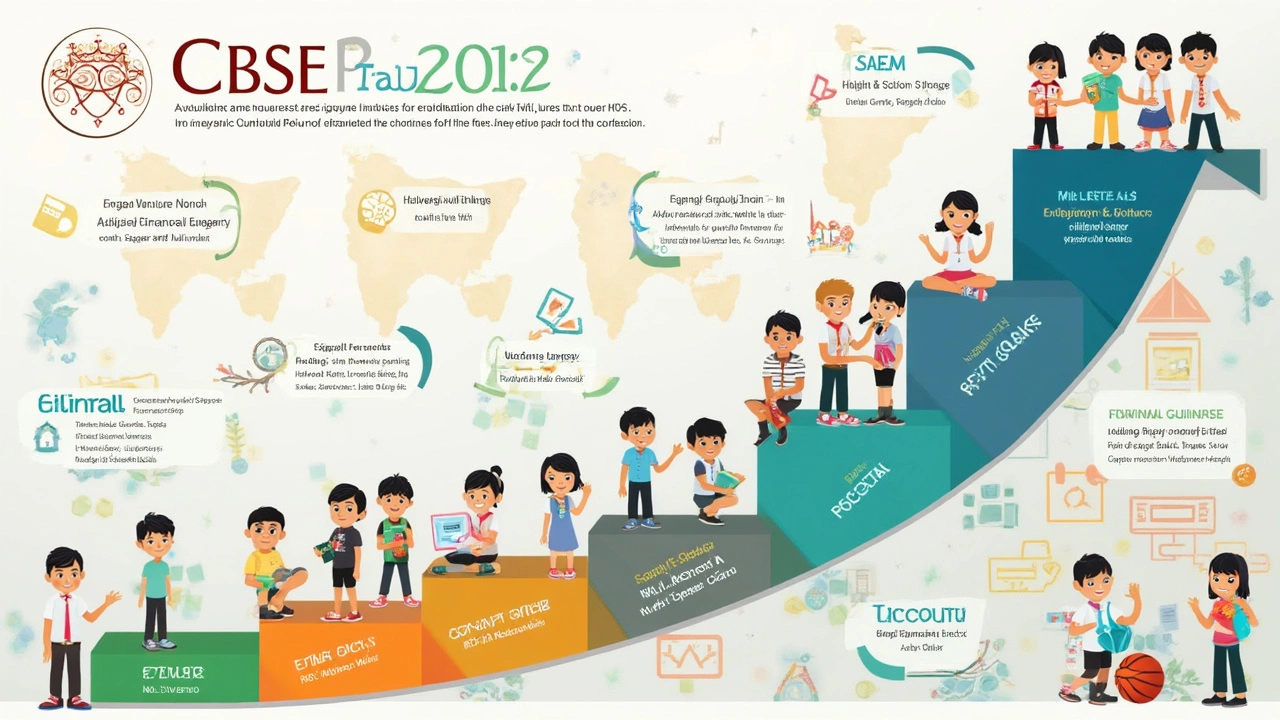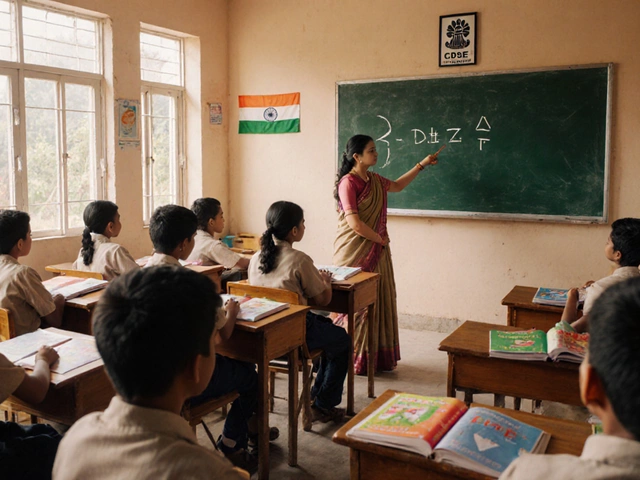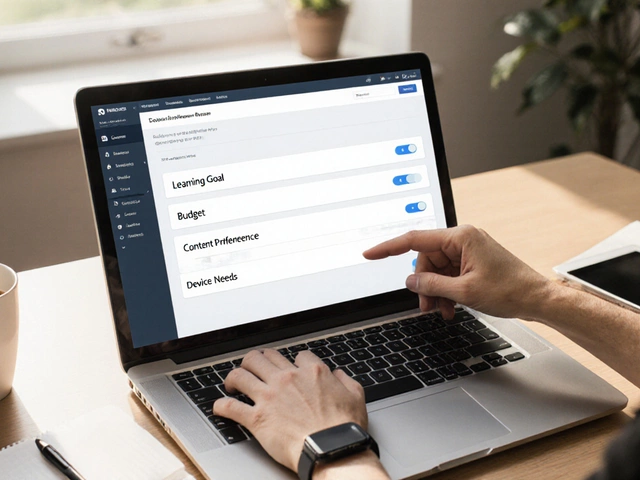
Got a kid in school or about to pick a board? CBSE is tossed around a lot in India, but what does the syllabus actually look like? The Central Board of Secondary Education (CBSE) sets up what most urban schools across the country teach, from first grade right up to 12th. But it's more than just a bunch of textbooks. The layout, topics, and exam style matter for both students and parents.
The CBSE syllabus isn’t the same everywhere; it gets updated almost every year. So if you’re checking an old book list or a hand-me-down study guide, you might be in for a surprise. The board keeps an eye on what’s relevant—think coding basics for middle schoolers, or health and safety lessons during the pandemic. Knowing these updates can actually make a difference in how you prep for those big exams.
- CBSE Syllabus Basics
- What Subjects Are Included?
- How the Curriculum Is Designed
- Recent Updates and Changes
- Tips to Tackle the Syllabus
- Why the CBSE Syllabus Stands Out
CBSE Syllabus Basics
The CBSE syllabus is set by the Central Board of Secondary Education, the most widely used curriculum for schools in India. It runs from Class 1 through Class 12 and is followed by over 27,000 schools in India and a handful outside the country. This board isn’t just popular with parents in Delhi or Mumbai—it's chosen by everyone from big city private schools to remote Kendriya Vidyalayas.
Here’s what’s cool: the syllabus is built in a way that aims to balance academics and life skills. So, it’s not only about dates, formulas, and grammar; there’s active focus on things like critical thinking, teamwork, and even digital know-how, especially in recent years.
Every year, CBSE reviews the curriculum and makes tweaks. Sometimes that means dropping outdated topics, sometimes adding new ones—like they added coding and data science in 2021 for classes 6-12. They also update content during big changes in the country, like when health topics got a boost during the COVID-19 lockdowns.
- Standardized syllabus across all CBSE schools
- Follows the National Education Policy (NEP) guidelines
- Updated almost every year
- Focus on both academics and practical skills
- Consistent board exams for class 10 and 12
| CBSE By the Numbers | Data (2024-2025) |
|---|---|
| Total CBSE schools (India & Abroad) | 27,000+ |
| Students appeared in 2024 board exams | ~3.2 million |
| Curriculum updates (last 5 years) | At least 4 major updates |
Parents sometimes ask if CBSE is too rigid. Actually, it’s quite flexible. The schools can use different teaching methods, as long as they stick to the topics and assessments CBSE tells them to follow. And unlike a few other boards, students from CBSE often have an easier time switching schools across India because the content stays the same, no matter what city they move to.
What Subjects Are Included?
The CBSE syllabus is pretty wide, but it’s not a mystery. What students learn depends on their class and the type of stream they choose in higher grades. Up to Class 10, it’s more or less fixed, so all kids get a similar foundation. From Class 11, students start picking what matters for their career goals—like Science, Commerce, or Humanities.
For Classes 1 to 10, here’s what almost every CBSE student studies:
- Mathematics
- Science (split into Physics, Chemistry, Biology from Class 9)
- Social Science (History, Geography, Civics, and Economics from Class 6)
- English (both Language and Literature)
- Second Language (often Hindi, but regional options are available in many schools)
- Computer Applications or IT (compulsory in many schools now)
- Physical and Health Education
- Art Education (drawing, music, dance—schools pick based on staff and student interest)
By high school (Classes 11 & 12), it’s all about subject choices. Here’s a quick comparison:
| Science Stream | Commerce Stream | Humanities Stream |
|---|---|---|
| Physics, Chemistry, Math/Biology, English, Computer Science or optional subject | Accountancy, Business Studies, Economics, English, Math/optional subject | History, Political Science, Geography, Economics/Psychology, English, optional subject |
Lots of schools give more “optional” subjects too—like IP (Informatics Practices), Physical Education, Psychology, Fine Arts, or even Fashion Studies. Languages like Sanskrit, French, or German also pop up as second or third language choices in some cities. Oh, and from 2024 onwards, coding is now recommended as early as Class 6 in many schools, so don’t be surprised to see Python as a project topic for a 12-year-old.
Quick tip: Before buying textbooks, check the school’s subject combo for the year. CBSE updates certain subjects every now and then, so you don’t want to be stuck with last year’s reading list!
How the Curriculum Is Designed
The way the CBSE syllabus is designed is actually more calculated than people think. CBSE isn’t just about cramming facts—it aims to build understanding and real-life skills that students can actually use. The National Curriculum Framework (NCF) lays the foundation and gives a blueprint for what gets included. CBSE updates its courses based on that, but the details—like chapter order, practical activities, and even internal assessments—come from subject experts, teachers, and even feedback from parents and students.
Here’s how it usually works:
- Subject committees meet every year to review what’s working and what isn’t.
- Experts check if the syllabus matches current events, technology trends, or changes in higher education.
- Participation from real teachers gives a reality check—what’s practical in everyday Indian classrooms actually matters.
- CBSE avoids overloaded syllabuses, trimming extra content or tweaking old chapters.
Don’t expect everything to be theory. CBSE insists on projects, assignments, and hands-on experiments, especially in science and math. That’s why you’ll see marks for practicals in most 10th and 12th board subjects. For subjects like computer science, coding and real-life applications are now a regular part of the plan.
Want a peek at the split-up for just one class? Here’s how the subjects for 10th grade typically break down:
| Subject | Theory Marks (%) | Internal Assessment/Practicals (%) |
|---|---|---|
| Math | 80 | 20 |
| Science | 80 | 20 |
| Social Science | 80 | 20 |
| Languages | 80 | 20 |
Notice those internal assessment marks? They push students to stay consistent through the year, not just study the night before finals. The idea is to mix up different ways of learning. Project work, oral tests, and lab work count toward the final grade, which actually takes off some stress from the big written exam.
One little-known fact: CBSE is trying to step up ‘21st-century skills’—things like critical thinking, working in teams, and knowing how to use digital tools. In 2023, CBSE started pilot programs for AI and data science in some schools. They’re still at the early stages, but it shows the board’s ready to keep pace with how the world is changing.

Recent Updates and Changes
The one thing you can always count on with the CBSE syllabus is that it never sits still. The 2024-25 academic year saw a few big moves that everyone—students, parents, even teachers—should actually know about.
First up, Artificial Intelligence (AI) is now offered as an elective from Class 9 onwards. You don’t have to pick it, but if you’re into tech, it’s worth a look. Coding is also sticking around longer for classes 6 to 8, and this isn’t just about syntax—they want kids to solve practical problems.
CBSE also trimmed the overall syllabus by about 25% during the pandemic, and while some chapters have returned, not everything is back in the textbooks. For example, a few chapters in Political Science and English Literature are still out, so don’t get tripped up following old guides that include them. Another shift: some Science topics have moved to higher grades and the focus on "Application Based Questions" is growing. Exams aren’t just about mugging up facts anymore—they drop questions where you have to think about real-world scenarios.
If you’re in Classes 10 or 12, keep an eye on practicals and internal assessments. CBSE pushed schools to focus more on these, meaning your year-round work matters as much as your board exam scores. Also, language options have expanded a bit, with more schools now offering regional languages as optional or second languages.
One thing students seem to love—sample papers on the official website are updated regularly and come pretty close to what appears in the boards. Teachers also use these to guide revision sessions, so don’t skip them.
Tips to Tackle the Syllabus
The CBSE syllabus isn’t exactly light reading—there’s a lot to soak in every year. But before you start freaking out over all those chapters, here’s what actually works when facing the mountain of content CBSE throws your way.
- Start Early, Break It Down: Don’t wait for pre-boards to crack open your books. Break the syllabus into small pieces and follow a weekly plan. For example, three chapters a week works well for most students in classes 10 and 12.
- Stick to the NCERT: CBSE pulls almost all its exam questions from the official NCERT textbooks. Seriously, no need to chase too many reference books, especially for science and math.
- Make Short Notes: Writing key points helps memory like nothing else. After finishing each chapter, make a quick summary. Pay extra attention to formulas in math and science—they show up over and over in board questions.
- Use Previous Years’ Papers: Did you know CBSE repeats similar questions in about 60% of its board exam papers? Download question papers from the last 5 years and practice. It’s the closest thing to having a test blueprint.
- Be Smart About Revision: Set aside the last month before exams just for revision. Try the Pomodoro technique—25 minutes of study, five-minute breaks. This helps you focus and doesn't tire you out.
- Ask for Help: Don’t wait till you’re lost. Use school WhatsApp groups, or join free doubt-solving apps that work with the CBSE syllabus. There’s also a bunch of YouTube channels that break down tricky topics (like Math Infinity or LearnoHub—huge student followings, and no cost).
If you want to get a sense of where the big marks come from, check out typical weightages:
| Subject | Theory Marks | Practical/Internal |
|---|---|---|
| Science (Class 10) | 80 | 20 |
| Mathematics (Class 10) | 80 | 20 |
| English (Class 12) | 80 | 20 |
| Physics (Class 12) | 70 | 30 |
| Chemistry (Class 12) | 70 | 30 |
One last thing—CBSE has been shifting toward more application-based questions. Expect case studies or real-life scenarios in exams, especially for science subjects. So, focus on actually understanding the concepts, not just memorizing definitions.
Why the CBSE Syllabus Stands Out
What makes the CBSE syllabus different from other boards like ICSE or state boards? For starters, CBSE goes big on consistency. No matter where you are in India—or even abroad, since a bunch of international schools use it—the curriculum is pretty much the same. This is a huge plus for families who shift cities for work. Kids won’t find themselves lost because of mismatched textbooks or exam formats.
CBSE’s approach is pretty practical. It tries to cut the stuff you don’t need and sticks to the essentials that get you set up for big exams like the JEE and NEET. That’s right—most entrance tests for engineering and medicine in India line up their questions with CBSE topics. This isn’t by luck; the board works closely with experts to make sure what’s taught in class fits what’s needed for those tests.
The syllabus also shifts focus as you move up. Up to Class 8, it’s all about basics and exploring ideas. By the time you hit high school, CBSE pushes core subjects and real-world applications—think case studies in Business Studies or real stats in Maths. Even subjects like Physical Education and Art have proper theory and marks, not just extra-curricular stuff tacked on at the end.
| Feature | CBSE | ICSE | State Boards |
|---|---|---|---|
| Standardization | High | Medium | Low |
| Entrance Exam Alignment | Strong | Moderate | Low |
| Exam Language Options | Hindi/English | English only | Regional/varied |
| Focus on Application | Yes | Partly | Varies |
Another solid reason? Flexibility. You can switch between Hindi or English for most subjects, which helps a lot in different states. Plus, CBSE rolls out lots of online resources, sample papers, and updated guidelines with each change. No other board is this quick or transparent about making things accessible to students and parents.
Need proof that it works? Of the top 100 scorers in JEE Main (2024), over 80% were CBSE students. So, if you’re eyeing competitive exams, this syllabus really does give you a leg up.





